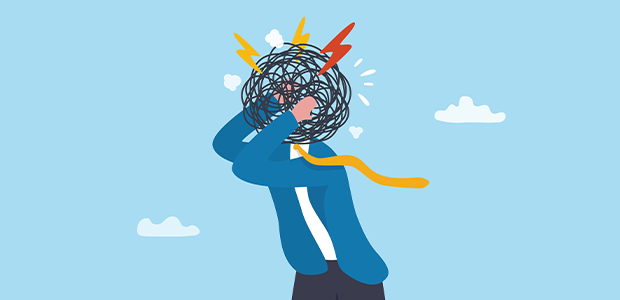
Decision fatigue is costing you funding: cognitive hacks for clearer choices
Founders are decision-making machines. From choosing your next feature to picking between two good-enough hires, your day is a stream of judgment calls, big and small. The problem? That stream becomes a flood. The more decisions you make, the worse they get.
That’s not weakness, it’s neuroscience. It’s called decision fatigue, and it’s the hidden cost of trying to do everything at once. In high-stakes moments like pitch meetings or product pivots, muddled judgment can tank clarity, dent credibility, and cost you funding.
The solution isn’t to avoid decisions. It’s to design your day, your week, and your mental load to protect your clarity. Let’s dive into the neuroscience behind decision fatigue, and three practical tools that sharpen your thinking under pressure.
The neuroscience of decision fatigue
Your prefrontal cortex (PFC), the brain’s CEO, is responsible for weighing options, regulating emotion, and making complex decisions. But it doesn’t have unlimited energy. Each choice you make draws on that finite pool of cognitive resources. As the day goes on, the PFC tires, and decision quality declines.
In studies on judges, for example, the likelihood of granting parole was significantly higher in the morning than in the afternoon. This wasn’t about the cases, it was about cognitive depletion and an increased likelihood of going with the status quo when more mentally depleted.
When founders hit decision fatigue, it shows up as:
- Defaulting to “safe” but suboptimal options
- Procrastination disguised as “waiting for clarity”
- Overediting a pitch deck but ignoring core story gaps
- Saying “yes” to too many things to avoid conflict
If you’ve ever stared at your Notion board and felt paralysed by 14 “urgent” to-dos, this is it.
Hack 1: use a priority ladder, not a list
To avoid decision fatigue, we must limit trivial choices and surface what really matters.
The classic to-do list fails because it treats every item as equal. A priority ladder restores perspective. Here’s how it works:
At the start of your day (or week), stack tasks into three tiers:
- Revenue-driving or investor-critical (Top rung)
- Team-scaling or customer-impacting (Middle rung)
- Operational admin or low-leverage tasks (Bottom rung)
Then apply a ruthless rule: only start work at the top rung. If that rung is empty or blocked, then, and only then, drop down. Research shows that mentally categorising tasks reduces ambiguity and helps the brain conserve cognitive energy.
This also trains your team to do the same. When everyone's climbing the same ladder, decision alignment improves, and time isn’t wasted debating what to do next.
Hack 2: run a pre-mortem before the pitch
You’ve practised the numbers. Your deck is tight. But something still feels... off. That’s a signal your brain is missing a key risk.
Enter the pre-mortem: a mental simulation where you assume your idea failed, and work backwards to identify why. Unlike a post-mortem (too late) or risk register (too general), this taps into your brain’s natural threat-detection network, the amygdala, and channels it into strategy.
Here’s a simple founder version:
- “It’s six months from now. We didn’t close the round. Why?”
- “We hired the wrong person. What went unnoticed?”
- “The product flopped. What assumption did we fail to test?”
Doing this 24 hours before big decisions or meetings lets you course-correct in advance. You pre-empt blind spots and walk into rooms with clearer, sharper logic. A good pre-mortem creates confidence that’s grounded, not just rehearsed.
Hack 3: check your energy before you decide
Good decisions don’t just come from good logic, they come from a well-fuelled brain.
The Resilience Dynamic model shows that when we’re depleted, our thinking narrows, creativity drops, and we fall into reactive patterns. You might know the right answer, but if your body is stressed, hungry, tired, or emotionally activated, your PFC is offline.
Before a major decision, especially with investors or team leads, run this quick four-point internal check-in:
- Physical: am I rested, hydrated, and fed?
- Emotional: am I calm, or am I reacting to something?
- Mental: do I have the bandwidth for this choice, or should I pause?
- Purpose: does this align with our long-term goals?
Even a 90-second pause to check these domains can reduce stress signals and help you lead from clarity, not cortisol.
You don’t need more time, you need fewer choices
Startups are built on bold decisions, but only when made with clarity, not chaos.
Protect your judgment the same way you protect cashflow. Limit trivial decisions. Run mental drills before high-stakes moments. Check your energy like it’s mission-critical, because it is.
Every hour spent overthinking is an hour lost scaling. These hacks aren’t just about being efficient. They’re about building a founder operating system that’s fit for high-stakes leadership.
Clarity is a muscle. Train it.
For more startup news, check out the other articles on the website, and subscribe to the magazine for free. Listen to The Cereal Entrepreneur podcast for more interviews with entrepreneurs and big-hitters in the startup ecosystem.

